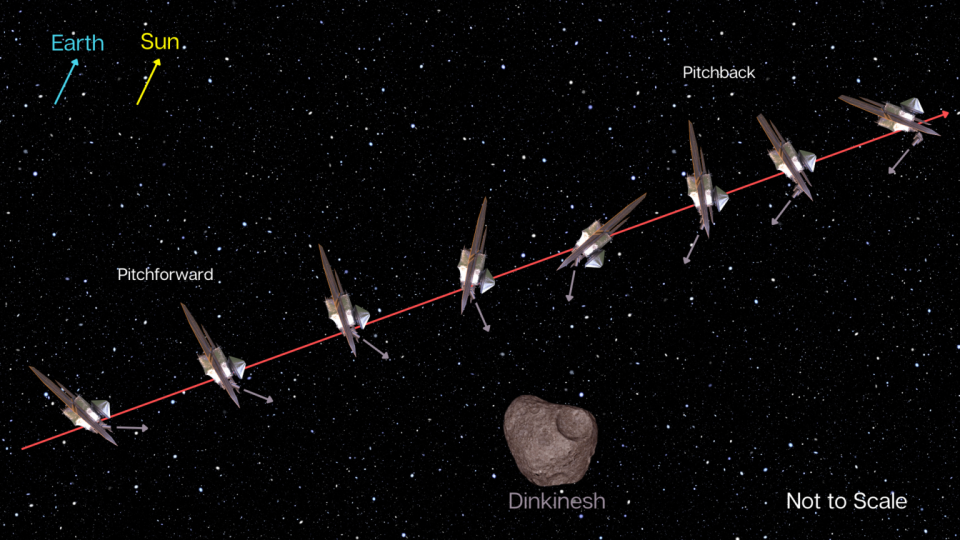NASA spacecraft has "phoned home" after 1st high-speed asteroid flyby
A spacecraft exploring an asteroid belt successfully "phoned home" to NASA after a high-speed asteroid encounter on Wednesday.
The spacecraft, named Lucy, has a primary mission of exploring Jupiter's Trojan asteroids, a series of asteroids trapped in the gas giant's orbit. The new high-speed encounter was with a small main belt asteroid that NASA called Dinkinesh, which is "10 to 100 times smaller" than the Trojan asteroids. The flyby served as an in-flight test of Lucy's "terminal tracking system," NASA said in a news release.
Hello Lucy! The spacecraft phoned home and is healthy. Now, the engineers will command Lucy to send science data from the Dinkinesh encounter to Earth. This data downlink will take several days. Thanks for following along today and stay tuned!https://t.co/sFLJS7nRJz pic.twitter.com/P7XpcM4Ks8
— NASA Solar System (@NASASolarSystem) November 1, 2023
Based on information sent to NASA when Lucy "phoned home," the spacecraft is considered to be "in good health" and has been commanded to start relaying data obtained during the encounter to researchers. This process will take about a week, NASA said in a news release detailing the spacecraft's mission, and will show how Lucy performed during the encounter.
NASA said that the spacecraft likely passed the asteroid at about 10,000 miles per hour. During this time, the spacecraft's tracking system was supposed to "actively monitor the location" of the small asteroid and move autonomously to make those observations.

Multiple features on the spacecraft were meant to be activated during the encounter, including a high-resolution camera that took a series of images every 15 seconds while passing close by the asteroid. A color imager and an infrared spectrometer were also meant to be activated. Lucy also is equipped with thermal infrared instruments that are not made to observe an asteroid as small as Dinkinesh, NASA said, but researchers are interested in seeing if the tools were able to detect the asteroid anyway.
Even as Lucy moves away from the asteroid, data will still be collected, with the spacecraft using some of its tools to "periodically" observe Dinkinesh for another four days.
Lucy launched into space two years ago on a 12-year quest to explore eight asteroids.
The spacecraft is named after the 3.2 million-year-old skeletal remains of a human ancestor found in Ethiopia, which got its name from the 1967 Beatles song "Lucy in the Sky with Diamonds." That prompted NASA to launch the spacecraft into space with band members' lyrics and other luminaries' words of wisdom imprinted on a plaque, the Associated Press reported. The spacecraft also carried a disc made of lab-grown diamonds for one of its science instruments.
Retired Army major analyzes Israel's decision to strike Gaza refugee camp
Yemen's Houthi rebels claim responsibility for Israel attack
House set to vote on GOP standalone Israel aid bill; Senators call out Tuberville

